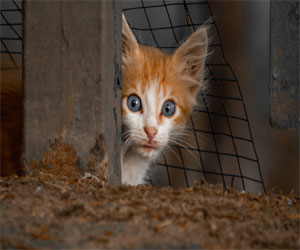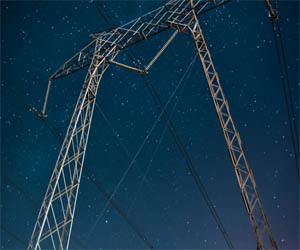



Michel de Nostredame, known as Nostradamus, was a 16th-century French astrologer and physician whose prophetic writings have captivated the imaginations of people for centuries. While he is renowned for his predictions of global events, political upheavals, and natural disasters, there's an intriguing aspect of his work that suggests a connection to technology, despite the fact that he lived long before the digital age.
One of the most frequently cited quatrains associated with Nostradamus' potential insights into technology is Quatrain 47 from Century 1, which reads:
"The speeches of Lake Leman will become angered,
The days will drag out into weeks, then months,
Then years, then all will fail."
Interpreters have suggested that "Lake Leman" refers to Lake Geneva, a location that has played a significant role in the development of modern technology, particularly in the field of physics and computing. The reference to time dragging on, eventually leading to failure, is seen by some as a foreshadowing of the potential dangers of overreliance on technology and the concept of time dilation due to technological advances.
Quatrain 72 from Century 10 is also often cited in discussions about Nostradamus and technology:
"The year 1999, seventh month,
From the sky will come a great King of Terror:
To bring back to life the great King of the Mongols,
Before and after, Mars to reign by good luck."
While the interpretation of this quatrain is highly speculative, some have connected it to the Y2K computer bug scare that gripped the world as the year 1999 approached. The notion of a "great King of Terror" descending from the sky is symbolically linked to fears of technology failing or wreaking havoc, which is precisely what many feared would happen with computer systems at the turn of the millennium.
It's important to note that Nostradamus' quatrains are highly metaphorical, and their vagueness has allowed for a wide range of interpretations. Critics argue that retrofitting his prophecies to fit technological advancements is a product of selective reading and confirmation bias, as Nostradamus could not have had direct knowledge of modern technology and its complexities.
While there are intriguing parallels between some of Nostradamus' verses and contemporary technological concerns, it's crucial to approach these connections with a healthy dose of skepticism. The scientific and technological revolutions of the modern age were beyond the comprehension of a 16th-century astrologer, and attributing knowledge of future technological developments to him is speculative at best.
The connection between Nostradamus' writings and technology is fascinating but highly speculative. Nostradamus' quatrains are open to numerous interpretations, and retroactively fitting them to contemporary technological issues can be subjective. His prophetic legacy is better appreciated for its literary value and historical significance than for its predictive accuracy regarding technology. The enduring enigma of Nostradamus continues to spark debates and discussions, but caution should be exercised when drawing connections to the realm of technology.
 REM (Rapid Eye Movement) Sleep: The REM stage is where most vivid, memorable dreams occur. During REM sleep, our brains become highly active, and our bodies essentially become paralyzed to prevent us from acting out our dreams physically. REM dreams are often emotionally charged and may reflect our deepest desires, fears, and concerns.
REM (Rapid Eye Movement) Sleep: The REM stage is where most vivid, memorable dreams occur. During REM sleep, our brains become highly active, and our bodies essentially become paralyzed to prevent us from acting out our dreams physically. REM dreams are often emotionally charged and may reflect our deepest desires, fears, and concerns.
Lucid Dreaming: Lucid dreaming is a unique state where the dreamer becomes aware that they are dreaming. This state allows individuals to take control of the dream's narrative, explore their subconscious, and even transcend the boundaries of reality. Lucid dreaming is a fascinating blend of self-awareness and creativity within the dream state.
Nightmares: Nightmares are dream states characterized by intense fear, anxiety, or horror. These unsettling dreams can be triggered by stress, trauma, or unresolved emotions, serving as a natural coping mechanism for processing negative experiences.
Daydreaming: Daydreams occur when an individual's mind drifts away from their immediate surroundings and focuses on an imagined scenario, thought, or memory. While daydreaming can occur during waking hours, it is, in essence, a form of dream state where the mind creates its own narrative.
Hypnagogia And Hypnopompia: These are transitional states between wakefulness and sleep. Hypnagogia occurs as you drift into sleep, while hypnopompia takes place upon waking. These states often produce vivid imagery, fleeting thoughts, or hallucinations, offering a glimpse into the boundary between wakefulness and dreams.






 Territorial Aggression: Cats are territorial animals, and they may become aggressive when they perceive an intrusion into their space. This type of aggression is often triggered by other cats.
Territorial Aggression: Cats are territorial animals, and they may become aggressive when they perceive an intrusion into their space. This type of aggression is often triggered by other cats.
Play Aggression: Kittens and young cats frequently engage in play aggression, which involves pouncing, biting, and scratching. While it may seem playful, it can escalate if not managed properly.
Redirected Aggression: This occurs when a cat becomes agitated by a stimulus (e.g., another cat outside the window) and then redirects its aggression onto a nearby person or pet.
Pain-Related Aggression: Cats in pain may exhibit aggression as a defensive response. It's essential to rule out any underlying medical issues in cases of sudden aggression.
Understanding The Causes:
To address cat aggression effectively, it's essential to identify the root causes. Common contributing factors include:
Socialization issues during kittenhood.
Lack of mental and physical stimulation.
Sudden changes in the cat's environment.
Presence of other animals in the household.
Undiagnosed medical conditions causing pain or discomfort.
Fear or anxiety due to past traumatic experiences.
Managing Cat Aggression:
Consult A Veterinarian: If you notice a sudden change in your cat's behavior, especially if it's accompanied by signs of illness or discomfort, consult a veterinarian.
A Sustainable Solution For A Greener Future
 Biogas And Anaerobic Digestion
Biogas And Anaerobic Digestion
Another waste-to-heat method involves the conversion of organic waste into biogas through anaerobic digestion. In this process, microorganisms break down organic matter in the absence of oxygen, producing biogas, which is primarily composed of methane. This biogas can be used as a renewable fuel for heating, whether in residential, commercial, or industrial applications.
Municipal Solid Waste-To-Energy
Waste-to-energy facilities that convert municipal solid waste into electricity often capture and utilize the waste heat generated during the process. This waste heat can be channeled into district heating systems, thereby providing a sustainable and efficient way to meet the heating needs of communities.
Environmental And Economic Benefits
Renewable heat from waste offers numerous environmental and economic advantages. Firstly, it reduces the demand for non-renewable heating sources, such as natural gas and oil, which helps lower carbon emissions and combat climate change. Additionally, it contributes to waste diversion, reducing the pressure on landfills and minimizing their environmental impact.
From an economic perspective, utilizing waste materials for heat generation can create jobs in waste collection, transportation, and processing, as well as in the design and maintenance of heating systems. This not only bolsters local economies but also provides an opportunity for sustainable development.
Hypnosis For Phobia Treatment
 Hypnosis, characterized by a state of deep relaxation and heightened suggestibility, offers a unique means of addressing phobias by tapping into the subconscious mind. During a hypnotherapy session, individuals are guided into a trance-like state where their minds become more receptive to suggestions. This heightened suggestibility allows the hypnotherapist to work with the individual to reframe their thoughts and feelings related to the phobia.
Hypnosis, characterized by a state of deep relaxation and heightened suggestibility, offers a unique means of addressing phobias by tapping into the subconscious mind. During a hypnotherapy session, individuals are guided into a trance-like state where their minds become more receptive to suggestions. This heightened suggestibility allows the hypnotherapist to work with the individual to reframe their thoughts and feelings related to the phobia.
Here's how hypnosis can play a crucial role in phobia treatment:
Accessing The Subconscious: Many phobias are rooted in the subconscious mind and linked to past experiences or traumas. Hypnosis can help individuals access these subconscious memories and feelings, allowing them to understand the root causes of their phobia.
Reprogramming Beliefs: Hypnotherapy enables individuals to challenge and reframe the negative beliefs and thought patterns associated with their phobia. By introducing positive and calming suggestions, the hypnotherapist can help individuals alter their emotional response to the feared object or situation.
Techniques For Awareness In Dreams
 Keep A Dream Journal: A dream journal is a crucial tool for developing lucid dreaming skills. Keep it by your bedside, and as soon as you wake up, jot down the details of your dreams. This practice enhances your dream recall, helping you identify recurring themes and symbols.
Keep A Dream Journal: A dream journal is a crucial tool for developing lucid dreaming skills. Keep it by your bedside, and as soon as you wake up, jot down the details of your dreams. This practice enhances your dream recall, helping you identify recurring themes and symbols.
Mnemonic Induction Of Lucid Dreams (MILD): The MILD technique involves setting a strong intention to remember your dreams and become lucid. Before falling asleep, repeat a mantra or affirmation to yourself, such as "I will become aware that I'm dreaming." The key is to truly believe in the intention.
Wake-Back-To-Bed (WBTB): The WBTB technique involves waking up in the middle of the night and then going back to sleep with the intention of becoming lucid. By disrupting your sleep cycle and returning to slumber, you increase the chances of entering a dream directly into a state of awareness.
Visualizations: Visualization techniques involve imagining yourself in a lucid dream scenario before falling asleep. This helps your subconscious mind prepare for the experience and increases the likelihood of becoming aware during the dream.
Progressive Muscle Relaxation: Relaxation exercises, such as progressive muscle relaxation, can help induce a calm and focused state before sleep. A calm mind and body can make it easier to enter the dream world with awareness.
Wake-Induced Lucid Dream (WILD): WILD is a technique that involves transitioning directly from wakefulness into a lucid dream. It requires concentration and awareness during the transition between wakefulness and sleep, often during a brief waking period in the middle of the night.
Hypnagogic State Exploration: Hypnagogia is the transitional state between wakefulness and sleep. Observing the visual and auditory hallucinations that often occur during this state can lead to lucid dream induction.